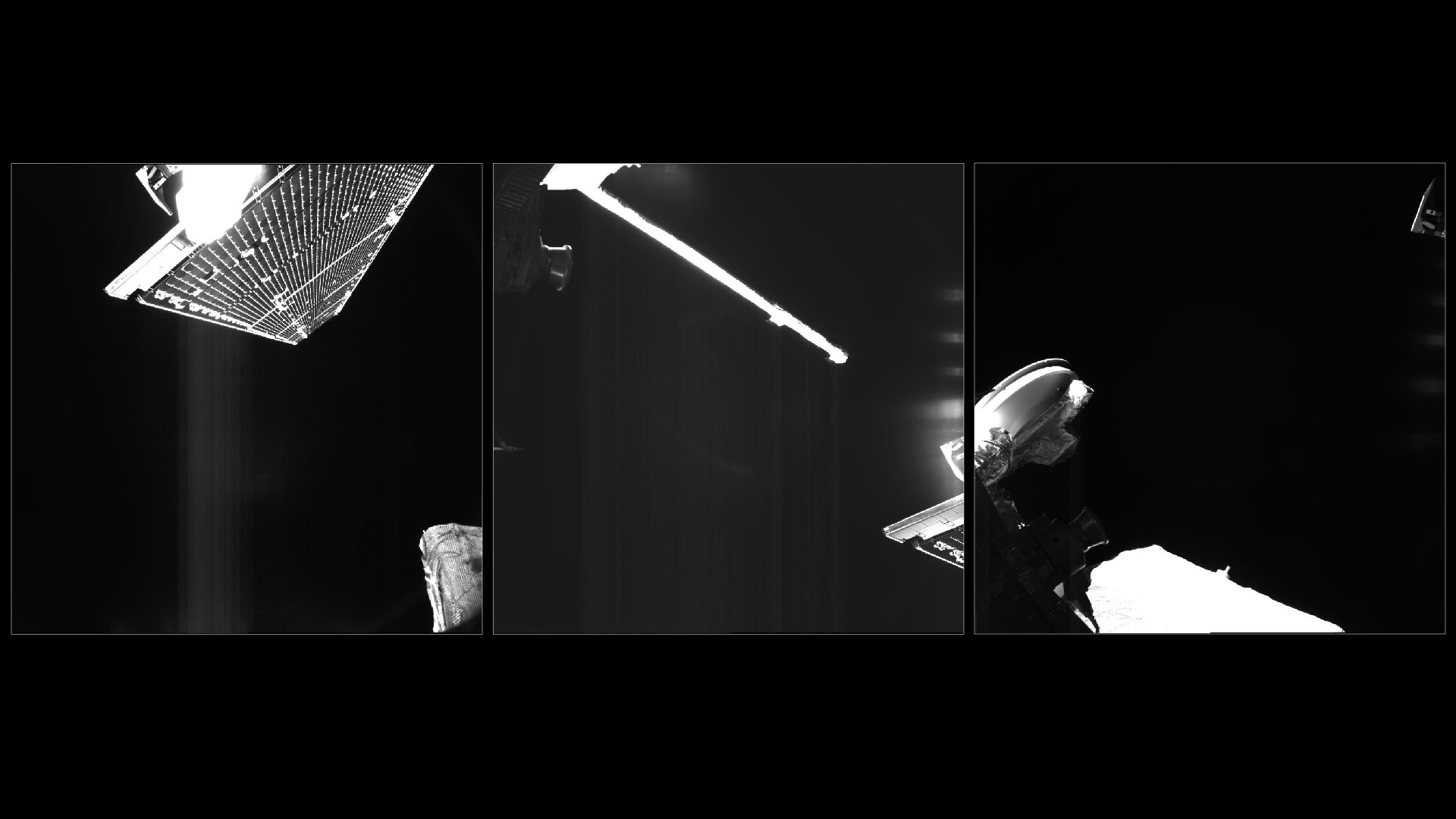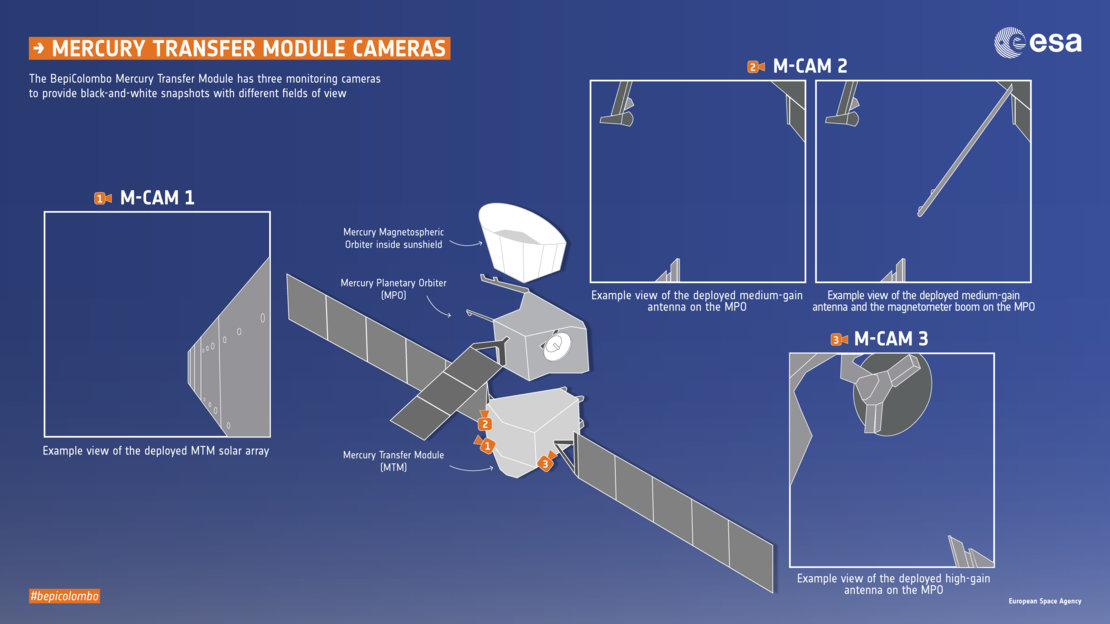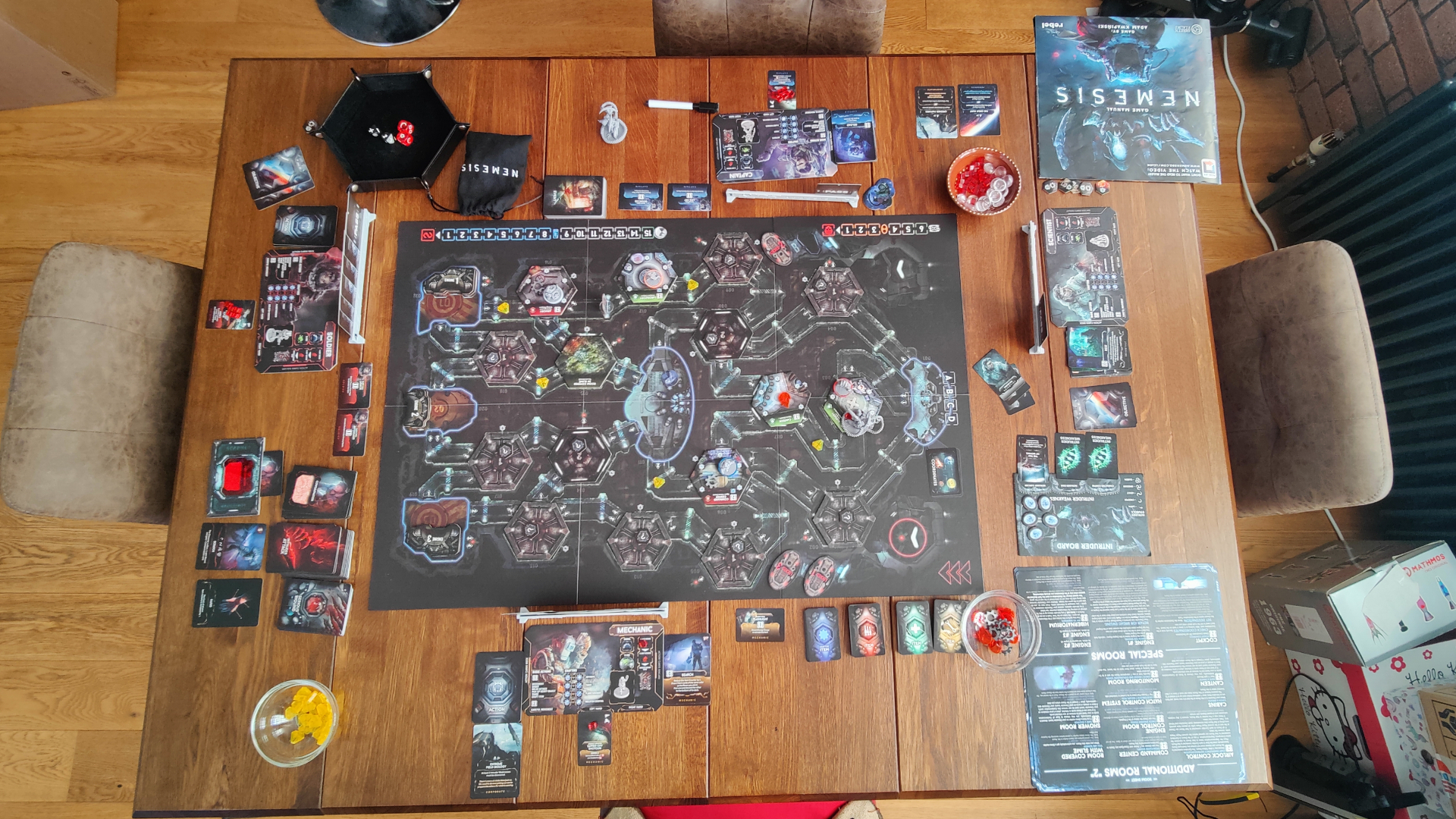BepiColombo Spacecraft Snaps Selfies En Route to Mercury
BepiColombo shows off its selfie skills in space.
Road-trip selfies are a must, especially when you're on your way to another planet.
The European Space Agency's (ESA) BepiColombo spacecraft snapped three selfies on its way to Mercury and posted the side-by-side images on its Twitter account (with nearly 3,000 followers) on June 17.
The Mercury Transfer Module, one of the spacecraft's three main components, has three built-in monitoring cameras pointed in different directions. One captured a photo of one of the spacecraft's two 50-foot (15 meters) solar arrays. The other two cameras showed its medium-gain and high-gain antennas, which are connected to another module called the Mercury Planetary Orbiter, ESA officials said in a statement. BepiColombo's third module, the Mercury Magnetospheric Orbiter, did not participate in this photo shoot.
Related: BepiColombo in Pictures: A Mercury Mission by Europe and Japan
The cameras take black-and-white images that are meant to visually record changes to the spacecraft, such as rotation of the solar arrays or changing the direction of the antennas, according to the statement. After BepiColombo launched last October, the cameras helped mission controllers monitor the deployment of the spacecraft's various moving parts. Its very first space selfie, taken just one day after it launched, showed the same solar array fully extended and in good shape.
BepiColombo is Europe's first mission to Mercury. The joint mission between the ESA and the Japan Aerospace Exploration Agency will take about seven years to reach the planet Mercury, flying by Earth in the year 2020.
- Israeli Moon Lander Snaps Epic Space Selfie with a Full Earth
- NASA Mars Orbiter Snaps Selfie to Mark 4 Years at Red Planet
- New NASA VR Apps Let You Take Space Selfies and Visit Strange New Worlds
Follow Passant Rabie on Twitter @passantrabie. Follow us on Twitter @Spacedotcom and on Facebook.
Breaking space news, the latest updates on rocket launches, skywatching events and more!

Passant Rabie is an award-winning journalist from Cairo, Egypt. Rabie moved to New York to pursue a master's degree in science journalism at New York University. She developed a strong passion for all things space, and guiding readers through the mysteries of the local universe. Rabie covers ongoing missions to distant planets and beyond, and breaks down recent discoveries in the world of astrophysics and the latest in ongoing space news. Prior to moving to New York, she spent years writing for independent media outlets across the Middle East and aims to produce accurate coverage of science stories within a regional context.


